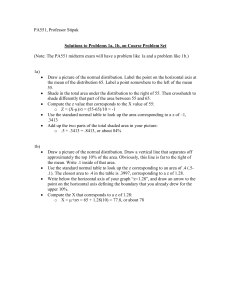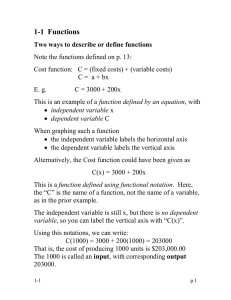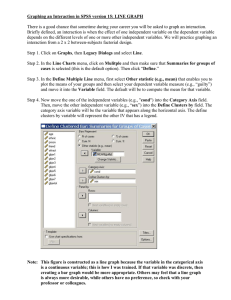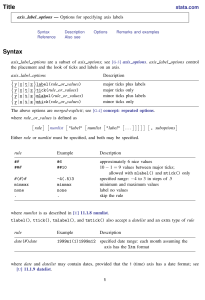1.3.3 Functions and Their Representations III graph
advertisement
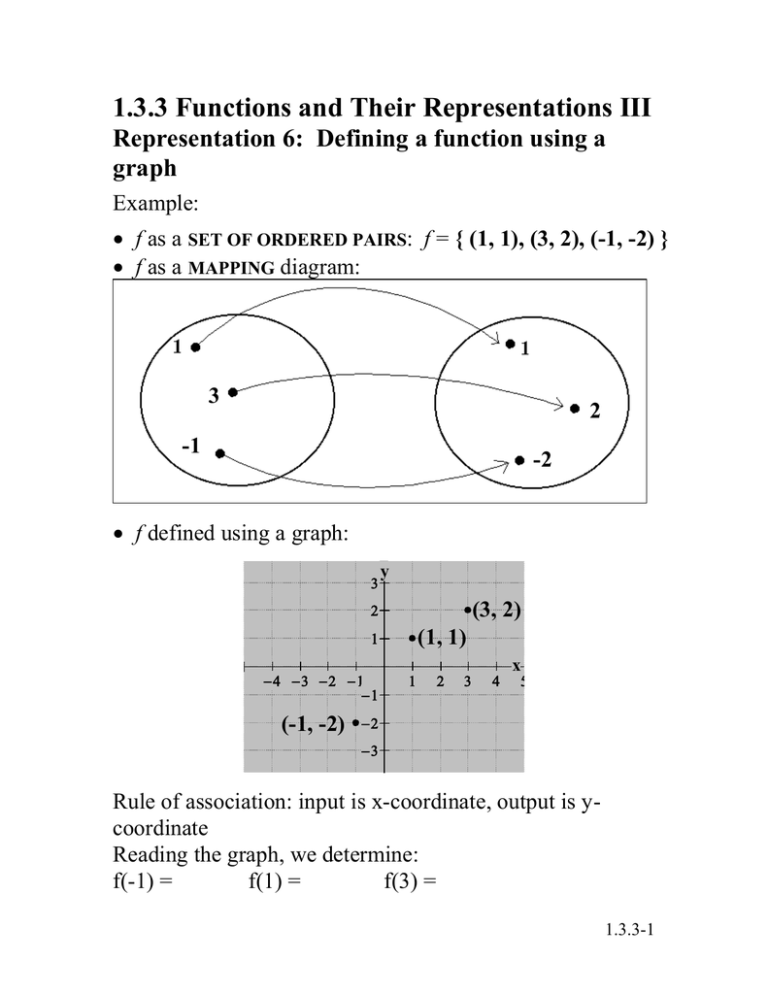
1.3.3 Functions and Their Representations III
Representation 6: Defining a function using a
graph
Example:
f as a SET OF ORDERED PAIRS: f = { (1, 1), (3, 2), (-1, -2) }
f as a MAPPING diagram:
3
2
-1
-2
f defined using a graph:
y
(3, 2)
(-1, -2)
(1, 1)
x
Rule of association: input is x-coordinate, output is ycoordinate
Reading the graph, we determine:
f(-1) =
f(1) =
f(3) =
1.3.3-1
f(x) = x2
EXAMPLE:
pairs are: (2,
), (-1,
),
name some more?
f = set of all ordered pairs
(x, f(x)) or
(x, x2)
f = {(1, 1), (2, 4), (2.5, 6.25), (-2, 4), (.01, .001) . . . }
(an infinite set of points)
Graph of f(x) = x2
y = x2
y
Note:
the definition f(x) = x2 does not name the output variable
which would be the “label” for the vertical axis
instead, we graph the function y = x2, giving us the label “y”
Even if:
points on a graph are not labeled, and
you don’t know the formula for the graph
You can still “play the input-output game”! Watch!!
1.3.3-2
y = output
x = input
f(2) = ?
find 2 on the horizontal axis
move up to the graph
move across to the vertical axis
read 3
so f(2) = 3
Makes sense, doesn’t it?
clearly, the point (2, 3) is on the graph
by definition of graph of a function, that makes f(2) = 3
f(0) =
f(-.5) =
sometimes, you have to approximate the output
1.3.3-3
Label and scale your graph
y
y
Guidelines for "label and scale":
(1) both axes must be labeled according to the names of the
variables given by the problem:
independent variable on the horizontal axis
dependent variable on the vertical axis
if the graph is the graph of a named function, e.g. f(x) = 2x
there is no named dependent variable
instead, use “y” as shown above
it’s the graph the function defined by the equation y = f(x)
(2) scaling should be done so as to convey the sense of scale of
the graph without overly cluttering it:
if the scale goes from 1 to 100, don't draw in 100 ticks and
scale each one
usually 2-10 scale ticks, with 2-3 of them labeled will
convey the scale, as shown above
1.3.3-4
Every function has a graph, but not all graphs
represent functions
Remember: a function associates an input with a unique
output. Any rule that associates an input with two outputs
is not a function!
Example:
vertical line test: if a moving vertical line will cut a graph
in more than one place, the graph does not represent a
function.
If you are given a graph like the above, and are asked
“Does this graph represent a function?”
Ans: no
Explanation: it fails the vertical line test
This explanation is not appropriate for functions not
presented as graphs.
1.3.3-5
Domain and Range for graphed functions
y
(3, 4)
Range generator
4
(x, y)
-2
7
x
Domain generator
Domain: set of all x-values for which vertical line cuts
the graph =
?
Range:
set of all y-values for which horizontal line cuts
the graph =
?
1.3.3-6

